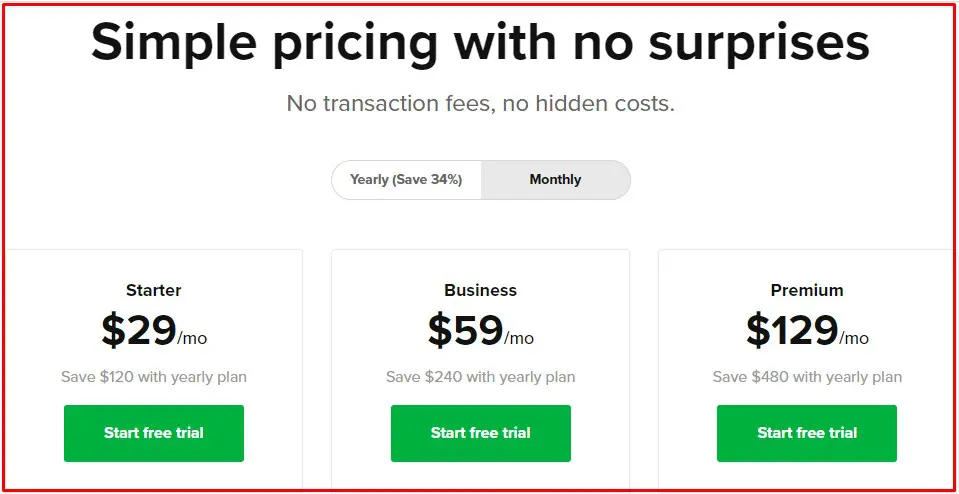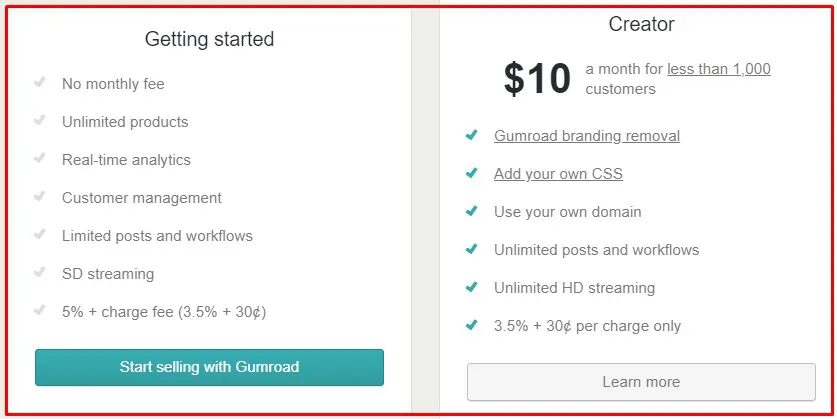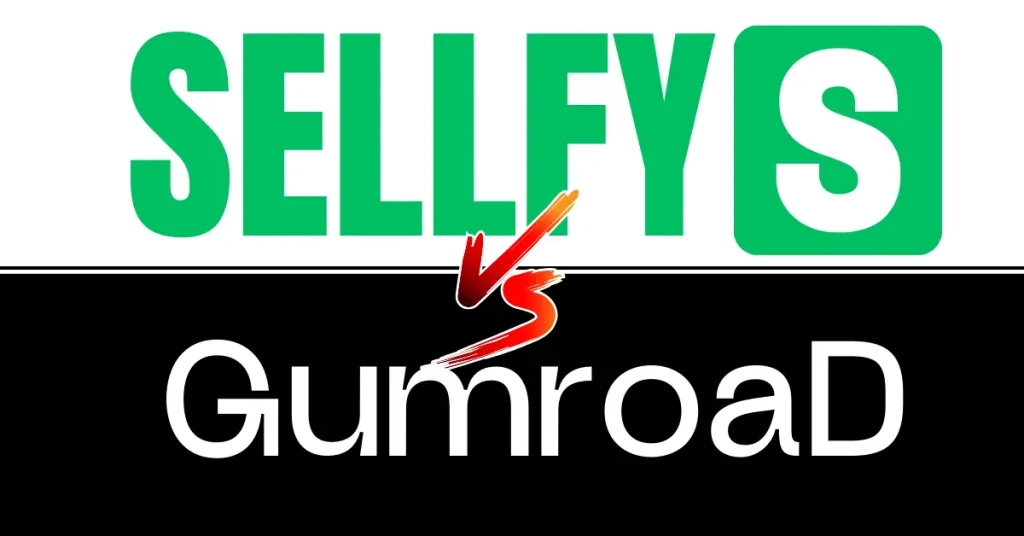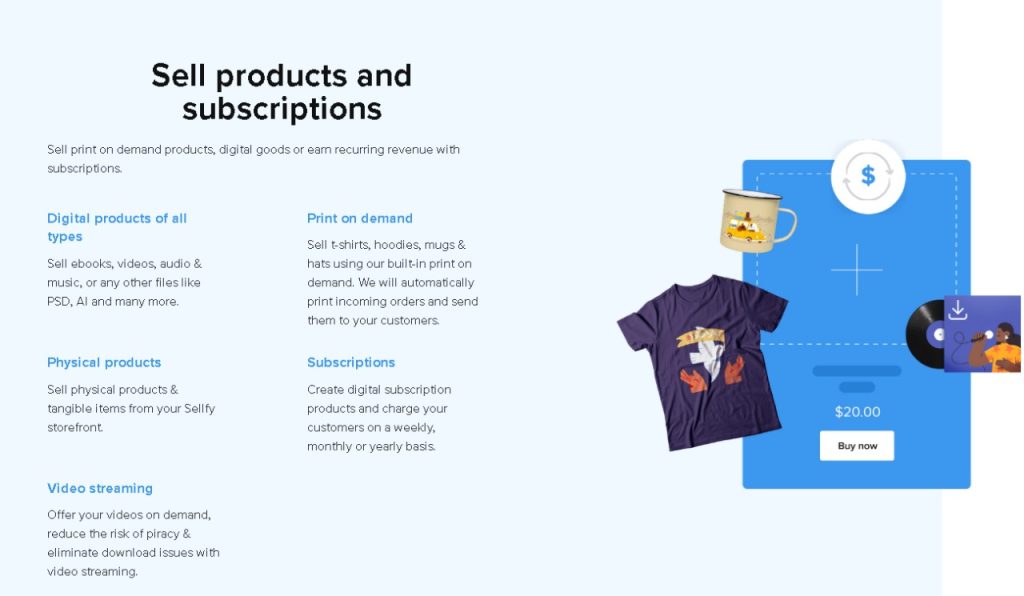Introduction
If you’re a creator looking to sell your digital products, physical items, or even services online, choosing the right platform is crucial. With so many options out there, it can be overwhelming to decide where to host your store. Two of the most popular platforms for creators are Sellfy and Gumroad, each offering unique features and benefits. But which one is truly the best for you?
In this article, we’ll dive into a detailed comparison between Sellfy and Gumroad, breaking down the top 10 key factors that matter most when selecting a platform. From ease of use and product types to pricing, sales features, and customer support, we’ll help you understand what each platform brings to the table.
Whether you’re just starting out and need something simple or you’re looking for advanced tools to grow your business, we’ve got you covered. By the end of this article, you’ll have a clear understanding of which platform aligns best with your needs as a creator. So, let’s jump in and find out which platform—Sellfy or Gumroad—can help you take your creative business to the next level!
1. Ease of Use– Sellfy and Gumroad
When it comes to setting up your online store, ease of use is a game-changer. Let’s be honest: not everyone is tech-savvy, and you probably want a platform that doesn’t require a coding degree to get started. That’s where Sellfy and Gumroad shine in different ways.
Sellfy is known for its user-friendly design. The setup is quick, and you don’t need any technical expertise to get your store up and running. You can choose from customizable templates, and even with a basic knowledge of design, you can create a store that fits your brand. Plus, the dashboard is intuitive, so managing your store becomes a breeze.
On the other hand, Gumroad takes a more minimalist approach. It’s super easy to use with no-frills simplicity. Setting up your store is straightforward, and the platform doesn’t overwhelm you with options or features. If you’re someone who prefers keeping things simple and focusing on just selling, Gumroad’s minimalist approach could be a perfect fit.
In short, Sellfy offers more options for customization, while Gumroad makes it easy to jump straight into selling with minimal fuss. Both are great, but your choice depends on how much customization you need from the start!
2. Product Types
One of the biggest differences between Sellfy and Gumroad is the variety of products you can sell. If you’re planning to offer more than just digital products, the choice of platform becomes even more important.
With Sellfy, you’re not limited to just digital downloads. You can sell physical products like merchandise, books, or prints, along with your digital items. Plus, Sellfy even supports subscriptions and services, such as online courses or consulting. This makes Sellfy an all-in-one platform that’s perfect for creators who want to sell a mix of digital and tangible products.
Gumroad, however, is more focused on digital products. It’s a fantastic choice if you’re selling things like ebooks, music, art, or software. While they’ve recently added support for physical products and memberships, it’s still mainly geared towards digital content. This makes Gumroad an excellent option for creators who only need a simple way to sell their work without worrying about managing physical inventory.
3. Customization
When it comes to customizing your online store, the level of freedom you get can make a big difference in how your brand stands out. Here’s how Sellfy and Gumroad stack up in this area.
Sellfy gives you a lot of creative control. You can choose from various customizable themes, tweak your store’s design, and even connect a custom domain. This means you can truly make your store look and feel like a unique extension of your brand. If you’re someone who enjoys tweaking designs or wants a polished, branded look, Sellfy’s the way to go.
On the flip side, Gumroad takes a much more minimalist approach. There’s no real way to significantly alter the look of your store. The design is simple, clean, and functional, but if you’re hoping for anything beyond a basic product page, you’ll be disappointed. This is great for creators who don’t want to spend time customizing and prefer a no-frills setup that’s ready to go quickly.
In short, if customization is a priority for you and you want more control over your store’s appearance, Sellfy has the edge. But if you value simplicity and don’t mind a basic design, Gumroad keeps things easy and efficient.
4. Pricing & Fees– Sellfy and Gumroad
When it comes to pricing, both Sellfy and Gumroad offer different structures, and understanding these can help you choose the best option for your business.
Sellfy operates on a monthly subscription model with different pricing tiers based on the features you need. The basic plan starts at $19 per month, which gives you access to essential features like selling digital products, managing orders, and some basic marketing tools. As you move up to higher plans, you unlock more advanced features, like reduced transaction fees, advanced marketing tools, and custom branding. While it’s a paid model, the predictable monthly fee can be a plus for creators who want access to a full set of features without worrying about high transaction costs.

Gumroad, on the other hand, has a pay-per-sale structure. There’s no upfront cost or monthly fee for the basic plan, which makes it appealing for creators just starting out. However, they take a higher transaction fee (8.5% + 30¢ per sale) for free accounts. If you upgrade to the Pro plan, the fee drops to 3.5% + 30¢. This flexibility is great for creators who don’t want to commit to monthly fees but can become more expensive if your sales volume increases.

So, if you’re looking for more predictable costs and advanced features, Sellfy might be the better option. But if you’re just starting out and want to keep things simple, Gumroad‘s free option could work well—just be mindful of those fees.
5. Sales Features
When it comes to boosting your sales, the right tools can make all the difference. Let’s break down what Sellfy and Gumroad offer in terms of sales features.
Sellfy is packed with advanced sales tools designed to help you maximize revenue. You get features like abandoned cart recovery, which automatically reminds customers who left your store without completing their purchase. There are also upselling tools, allowing you to recommend related products to buyers. And if you’re into email marketing, Sellfy offers built-in tools for running campaigns to keep your audience engaged and drive repeat sales. These features are especially helpful if you want to actively grow your store and build relationships with your customers.
Gumroad, in contrast, has a more basic set of sales tools. It includes discount codes and the ability to send email newsletters, but there aren’t many other advanced options. For creators who prefer simplicity, Gumroad’s approach can be enough. However, if you’re looking for more robust marketing features, it may feel a little limited.
If you’re focused on growing your sales and customer base, Sellfy gives you the tools to do just that. But if you’re after a straightforward, no-fuss approach, Gumroad keeps things simple without overwhelming you.
6. Payment Processing– Sellfy and Gumroad
When you’re selling online, the way you handle payments is crucial for both you and your customers. Let’s look at how Sellfy and Gumroad handle payments.
Sellfy gives you more payment flexibility. You can accept payments through PayPal or Stripe, both of which are trusted by customers worldwide. Plus, Sellfy supports multi-currency transactions, which is a big win if you’re selling internationally. This makes it easy for your global customers to buy from you in their local currency, increasing the likelihood of conversions.
Gumroad, on the other hand, also supports PayPal and Stripe for payments, but with fewer payment options overall. While it’s simple and works for most creators, it doesn’t offer the same multi-currency support as Sellfy. So, if you’re looking to reach a wider, international audience, this could be a limitation. That said, for U.S.-based creators, Gumroad’s payment system is straightforward and efficient.
If international reach and multiple payment options are important for your business, Sellfy is the clear winner. But if you’re focusing on a more localized or smaller audience, Gumroad’s simple payment processing might be all you need.
7. Store Management
When running your online store, how easily you can manage orders, track inventory, and keep an eye on customer data is super important. So, how do Sellfy and Gumroad compare in terms of store management?
Sellfy offers a robust set of management tools. If you’re selling both physical and digital products, it makes life easier with features like inventory tracking and order management. You can also get a deeper look into customer insights, helping you understand who’s buying and what they’re interested in. This is great if you’re looking to scale and need more control over your store’s operations.
Gumroad, in contrast, takes a more minimalist approach to store management. It’s designed for creators who want to keep things simple and streamlined. While you can manage orders and track sales, there are fewer advanced tools like inventory management or detailed customer insights. This simplicity can be a plus if you’re just starting out or don’t have a lot of products to manage.
If you want a platform with more comprehensive store management tools, Sellfy is the better choice. But if you’re after a straightforward, no-hassle experience and don’t mind fewer bells and whistles, Gumroad keeps things simple and easy.
8. Customer Support
When you’re running an online store, good customer support can save you a lot of time and frustration. So, how do Sellfy and Gumroad compare when it comes to helping you out when things go wrong?
Sellfy offers 24/7 customer support, meaning you can get help anytime you run into issues. Whether you need assistance via email or a quick chat through their live support, Sellfy’s team is there to guide you through any technical difficulties or questions you might have. This can be a big relief if you’re new to online selling or need immediate assistance during busy periods.
Gumroad, on the other hand, primarily offers support through email and has a community forum where users can help each other. While the support team is helpful, response times can be slower, especially if you’re on a free plan. For creators who are okay with a little DIY troubleshooting or prefer to figure things out on their own, this approach might work just fine.
If you want fast, reliable support, Sellfy is the better choice with its 24/7 live chat and email options. But if you don’t mind waiting a bit or prefer a more community-driven support model, Gumroad might still do the job.
9. Analytics and Insights– Sellfy and Gumroad
When you’re growing your online business, having access to the right data can make a big difference in how you strategize and optimize. So, let’s talk about how Sellfy and Gumroad stack up in terms of analytics.
Sellfy provides detailed analytics that can help you dive deep into your store’s performance. You can track sales, customer behavior, traffic sources, and even which products are performing best. This wealth of information allows you to make data-driven decisions, whether it’s adjusting your marketing strategy or figuring out what products to promote more. For creators serious about growing their business, these insights can be incredibly valuable.
Gumroad, while offering some basic analytics, doesn’t go as deep. You can track sales and see some basic trends, but there isn’t the same level of detail or insight into customer behavior. If you’re just starting out and only need to keep an eye on basic sales numbers, this might be enough. However, if you want to get more granular data to optimize your store and marketing, you might find Gumroad a bit lacking.
So, if detailed analytics are important to you, Sellfy is the clear winner. But if you’re looking for a simple overview and don’t need tons of data, Gumroad will still work just fine.
10. Global Reach and Payment Processing
When you’re selling online, it’s important to think about how easily your customers can pay, especially if you’re looking to reach a global audience. Let’s break down how Sellfy and Gumroad handle this.
Sellfy gives you more flexibility with global sales. It supports multiple currencies and allows you to accept payments from customers worldwide using PayPal and Stripe. This is a huge plus if you want to expand your customer base beyond your local market. You can cater to international buyers without worrying about currency conversions or payment issues, making Sellfy an excellent choice for creators with a global reach.
Gumroad, while international, doesn’t offer the same level of multi-currency support. It works fine for creators in the U.S. or those with a more localized audience, but international creators might face some limitations. For example, there’s less flexibility in terms of regional payment options, and currency conversion isn’t as seamless. This can be a challenge if you plan on scaling your business to a larger, global market.
In short, if your goal is to sell to international customers and accept payments in various currencies, Sellfy has the advantage. But if you’re focusing on a smaller, more localized market, Gumroad can still serve you well.
Conclusion
So, which platform is right for you—Sellfy or Gumroad? Well, it really depends on what you’re looking for in an online selling platform.
If you’re a creator who wants more customization, access to advanced sales tools, and the ability to sell both digital and physical products, then Sellfy might be the perfect fit for you. It’s a more robust platform with plenty of features designed to help you grow your business, especially if you’re aiming for a global audience.
On the other hand, if you prefer simplicity and want to get started with no upfront costs or a minimal setup, Gumroad is a great option. It’s straightforward, no-frills, and ideal for those who just need a simple way to sell digital products without worrying about too many features.
At the end of the day, both platforms have their strengths. For creators just starting out or focused on digital content, Gumroad could be your best bet. But if you’re looking to scale, manage a variety of products, and get deeper insights into your business, Sellfy is probably the better choice. Take some time to think about your needs, and pick the platform that’ll help you reach your goals. Happy selling!



